
Transcription
PTSD AND THE PYRAMID OF CRIME
[In HONOR of the St. Louis (Ferguson) & N.Y.C. Protestors against police brutality, I modified this essay from our VOV (Victory Over Violence) Movement, since police terrorism, also, leads to PTSD.]
The Onset
The sun is setting on a hot midsummer L.A. afternoon, while a group of preteens linger around a friend's apartment building. With their adrenaline still on high from playing basketball, jokes & the ball are both freely flying back & forth. Suddenly, the jovial atmosphere is pierced by 2 deafening 'pops!'. Being accustomed to this, they all hit the ground, instantaneously, as if in a military drill. Now the only sound heard is that of the ball rolling aimlessly down the driveway. After a month passes, one stands up laughing, "Ah, it's only a car backfiring!". Not skipping a beat, the jokes & the ball are back in play, but, with 2 noticeable differences. Due to anewed adrenaline peak, the mood is oddly more jokey, & the butt of the jokes has become the one individual that was the slowest to react. This is a moment I will never forget, on account that my friends taught me 2 valuable lessons this day: Being slow on the uptake can not only get you killed, but, also, make you the joke of the day, or, in this instance, the week.
Growing up in this type of environment, along w/its perpetual police occupation, was why we would commonly refer to L.A. as Baby Beirut, or Lil' Vietnam. There was always a consciousness of our similarities w/others in war-torn areas. Today, I still recognize that human spirit that snaps back to jubilance, after being terror-struck, in the youth of Afghanistan, Iraq, the Gaza Strip, et al.
Presently it is coming to light that these monikers we had for L.A. may hold even more significance that anyone realized. A deeper analysis into these metaphors may reveal why our inner-cities continue to self-destruct, &, also, some solutions.
Gradually, I started to notice similarities among the behavioral tendencies in some of the people f/the inner-cities, & a portion of the returning troops. Even their ways of thinking were comparable! These inclinations transcended race, culture, & backgrounds. However, they did share analogues ordeals.
An eye-opening article, "Casualties of War: The Hell of war comes home," in the Colorado Springs Gazette, went into depth about the toll PTSD (Post-Traumatic Stress Disorder) took on an infancy division out of Fort Carson, CO.¹ This particular division had multiple deployments into the most dangerous sections of Iraq & Afghanistan. Not surprisingly, they, also, suffered the most casualties. In fact, one day in October 2009, they lost a total of 8 members in Afghanistan. Two excerpts regarding their behavior upon returning to the U.S.:
The battalion is overwhelmingly made up of young men, who, demographically have the highest murder rate in the U.S., but the brigade still has a murder rate 20 times that of young males as a whole.
The killings are only the headline grabbing tip of a much broader pyramid of crimes, since 2005, the brigades returning soldiers have been in brawls, beatings, rapes, DUIs, drug deals, domestic violence, shootings, stabbings, kidnappings, & suicides.
This is the exact same 'pyramid of crimes' that has been established, for decades, inside of our inner-cities. This is what one would call a LINK, for this reason, we MUST look at the sources of PTSD.
PTSD is a severe & ongoing emotional reaction to an extremely psychological trauma, such as encountering, or, witnessing events that are perceived as life-threatening. Some examples: Being a victim of kidnapping, torture, drug addictions, bullying, physical, &/or, sexual assaults, muggins, or, robberies.
Symptoms may include: Reexperiencing the trauma through flashbacks [see 9/11 comparison, below] & nightmares; avoidance of things (or places) associated w/the trauma; increased arousal²; sleep disorders; anger; hypervigilance³; depression; substance abuse; & suicide⁴.
PTSD can also lead to other disorders like: Bipolar, eating, obsessive, & panic disorders. Young adults can suffer from regressive development, engage in risky behavior, have trouble focusing, &/or, managing their impulses. The latter is sometimes mistaken for ADHD (Attention Deficit Hyperactivity Disorder).⁵
Hollywood has shown PTSD f/various POVs; The veteran: "Coming Home," "Born on the 4th of July," "Deer Hunter,"....; The inner-city: "Boyz in the Hood," "Menace to Society," "South Central," &, most poignantly, in the documentary, "Crips & Bloods: Made in America." Also, the police: "Colors," "Deep Cover," &, esp., Denzel Washington's character in "Training Day."
Here of utmost relevance its the more extreme form of PTSD known as C-PTSD (Complex Posttraumatic Stress Disorder). C-PTSD arises from prolong exposure to traumatic events, particularly, those that are combat related. This can explain why the Fort Carson Unit had 10 on its infantrymen arrested & accused of murder, attempted murder, or, manslaughter, since 2006.
A slight look at the statistics show that our inner-city youth have, also, been living within protracted combat zones. After 3-4 years of combat, in both Iraq & Afghanistan, troop casualties reached 1000.⁶ Nevertheless, in 2003, then Governor George Ryan announced, "In Illinois last year we had about 1000 murders." (Ciolino, 2005) In 2008, 1494 people under 18 were slain nationwide.⁷ In each of the latter two instances, we had 3 years of overseas casualties that equalled just one year AT HOME. This trend continued into 2009, where, by August, a small section of South Central L.A. recorded 74 murders, with 30 coming between the months of July & August. The LAPD claimed that this inner-city war was so overwhelming that they needed an injunction. (This is not unlike the curfews imposed throughout the most vio-lent sections of Iraq.) By October, Chicago reported 307 homicides, with people under 25 accounting for 152 of those. That same month, even a small town like Salinas, CA, reported that 10 of its 22 homicide victims were 19, or younger.⁷ Any rational person would clearly classify these areas as war-zones.
I'm tired of seeing bodies on the street/ deceased/ looking through my high school yearbook/ reminiscence of the tears/ as the years/ took one homie/ 2 homes, 3 homies/ POOF!/ we used to have troops/ but, now there's NO MORE YOUTHS TO SHOOT....
- Tupac, "Black Cotton," (CD: "Loyal to the Game" (2004)
Tupac, like most of us, knew that to survive in these areas one is compelled to embody the persona of a GI. (E.g., our reaction to car backfirings.) Amazingly, close to 2 decades after his death, this song is STILL meaningful as over. I experienced these sane sentiments while going through my own yearbooks. All this lead to the proposition: "When circumstances require a person to inherit a GI's persona, does he, also, inherit a GI's PTSD?
Herein, an examination of the symptoms of C-PTSD are, now, in order. They include: Persistent feelings of helplessness; feelings the perpetrator is all-powerful, &, a preoccupation w/either revenge against, or, allegiance w/the perpetrators⁸; & most damagingly,, the sufferer can change his/her view on what gives them meaning, i.e., a LOSS of spiritual faith. This, in turn, ESCALATES the sense of HELPLESSNESS & DESPAIR. U.S. Atty. General, Eric Holder elaborates, "We simply cannot stand for an epidemic of violence that ROBS OUR YOUTH of their CHILDHOOD & perpetuates a cycle in which today's victims become tomorrow's criminals."⁷ The 1st building block in this 'pyramid of crime,' is the ROBBERY of OPTIMISM & HOPE.
An often overlooked additive, in this 1st building block, is the ROLE that those who are PAID 'TO SERVE & PROTECT' play in its construction. Delores Jones-Brown, director of John Jay College of Criminal Justice's Center on Race, Crime & Justice, expounded, "I've been dealing with these issues since 1997, & in 10 years, there HAS NOT BEEN PROGRESS.... People in the community are AFRAID of criminals & THE POLIVE WHO COME TO INVESTIGATE THE CRIMINALS."⁹ This reaction to the police (a la Ferguson) comes from 2 main factors: PHYSICAL & PASSIVE VIOLENCE.
First, to understand the psychological effect of the physical violence, one needs to just think back to the 9/11 tragedy. Remember how the whole country was paralyzed by witnessing Americans being killed, ONLY because they were Americans? Minorities are CONSTANTLY in this STATE OF TRAUMA, from beholding, OVER & OVER, someone that looks like them CONSISTENTLY being gunned down, ONLY because of THEIR COMPLEXION. Then, to FURTHER TRAUMATIZE THEM, they have to watch the perpetrators' actions ruled JUSTIFIED time, & time again. Now, this would ROB ANYONE of their OPTIMISM!
Second, comes the TRAUMA from PASSIVE VIOLENCE. (Racial profiling, constantly being labelled as, "fitting description of a suspect," etc.) A colleague at VOV, Daniel Hall, describes passive violence as: "Anything we do that undermines the fundamental dignity of another human being or ourselves." For instance, it is verbal, psychological, & emotional abuse; teasing, taunting, basically making someone feel bad about themselves... to dehumanize another.¹⁰
The great Indian Civil Rights Leader, Mahatma Gandhi accentuated, "Passive violence is the FUEL that feeds the fire of physical violence."¹⁰ History supports this statement. Hitler's Passively violent propaganda crusade that "dehumanized Blacks, Gypsies, Jews, & others" made it EASIER for the German people to eventually accept the "OTHERS" EXTERMINATION.¹⁰ This tactic was used centuries before: after Columbus' western "discovery," the Spanish, & Portugese, campaigned that the Natives were "beasts with a human face... had no moral sense... DID NOT BELONG TO THE HUMAN RACE...." Thereafter, "the Spanish began to SLAUGHTER them like ANIMALS...." (Botton, A) [Reflect to footage of a Ferguson officer calling CIVIL PROTESTORS, "ANIMALS," w/his gun drawn. OMINOUS?] Could the dehumanization of minorities by the media, the police, & at times, ourselves, contribute to these homicides/assaults continually being ruled "JUSTIFIED?"
Maintenance/Alleviation
In late 2009, ABC's "Nightline," aired an episode in which they visited a L.A. high school. Almost every student interviewed knew of someone murdered. A shooting even occurred while ABC were there! We may have hundreds, or, thousands, of schools like this across the country. A military study disclosed that in the civilian community, the average length of time from the onset of PTSD, & receiving treatment in 12 years. This is unacceptable, which is why the military implemented a program that rushed counselors out to servicemembers "shaken by the loss of friends, or near-death experiences from attack," within days.¹¹ [Btw, schools may want to take cues from, "Theater of War," a play funded by the Dept. of Defense, to help troops cope with PTSD.¹²
However, most of us in the "civilian Community" will not have an opportunity to visit counselors within days 'of a loss, or near-death experience[s].' Therefore, to alleviate this epidemic, it is imperative for us to take advantage of military studies/solutions, etc., plus, PRACTICE SELF/COMMUNITY ELEVATION.
Our innate capabilities to overcome hardships cannot be overstated. TRUE HISTORY establishes this. Materials on PTSD/C-PTSD⁵ lists various therapies one can practice autonomously, or, with others. They can be placed into 3 categories:
1) Knowledge: Understanding the problem is to be halfway towards solving it. Once conscious of the causes & symptoms, one can determine whether they, or, someone they know, are sufferers of this epidemic. The National Institute of Mental Health, offers self-tests.
2) Management/Coping: Anger & anxiety can be managed through RELAXATION techniques. Exercise is an age-old stress-reliever. Yoga (one of my favorites) & Pilates are known to work the BODY & MIND, simultaneously. (In San Francisco, there's "Yoga for Recovery," to help kick addictions; &, "Pilates for Men" is a more strenuous form of the exercise that adds calisthenics, push-ups, & weighs.) Hobbies, also, are great relaxation tools.
Dialogue may be the most valuable coping mechanism of all. Talking with others of similar experiences can take the solitary feel of PTSD away, &, help build camaraderie. This is what we witnessed in Ferguson, when so many diverse people came together & bonded, instantaneously, over related traumatic events. [Some were even enemies, like the Crips/Bloods, akin to what happened after the "Rodney King Verdicts."] It is also a way to discover new coping techniques, & pass them onto others, esp., the youth. [Another thing seen in Ferguson.] - "Each one, Teach one."
3) Mindfulness (Point of View): In Buddhism, this is known as: "Becoming the MASTER of your MIND, rather than letting your mind master you." (Ikeda, 2000) Specifically, mastering any negative thoughts that arises from traumatic experiences, & CONVERTING them into productive thoughts. In life, as in exercise, resistance builds strength. Take the saying, "If I can make it here, I can make it anywhere," as a prime example. It's said, that John D. Rockefeller, took a negative ordeal - losing a girl, because of his low finances - as fuel to becoming one of the richest men in America. A great way to TRAIN ONE'S MIND, in any endeavor, is through MEDITATION. (My OTHER favorite!) Keep in MIND, one constant among SUCCESSFUL people is the VISUALIZATION of their success, beforehand.
Actually, all of the above self-reliant practices have been professed by Western & Eastern philosophers for ages. This process is known as a "Human Revolution":
Only such humanism, showing that salvation STARTS within OURSELVES, can give us the force to reach higher thresholds, allowing us to scan alternative paths toward the future, This renaissance of the human spirit in a MOMENT OF DISTRESS is what I mean by the HUMAN REVOLUTION.
The concept of a REVOLUTIONARY renewal from within... responds to the primary need TO SURVIVE TO AVOID SELF-DESTRUCTION.
- Club of Rome cofounder, Aurelio Peccei (Peccei & Ikeda)
If the outbreak of PTSD/C-PTSD (& its CAUSES) is not contained, we will not 'avoid self-destruction.' As Tupac said, there will be 'no more youths to shoot!!!' NO YOUTHS = NO FUTURE!!! Without a wide-spread Human Revolution, soon there will be C-PTSD sufferers returning from prisons, & abroad, merging with those already in our communities to create one tumultuous time-bomb, that none of us want to see DETONATE!!!
SEPT. '14
[Original, Jan. 2010, for Valley Center District.]
NOTES
1. "Casualties of War: The hell of war comes home," by Dave Phillips. www.informationclearinghouse.info/article23154
2. "When a soldier faces constant threat of attack, studies suggest, the brain is flooded w/adrenaline, dopamine & other performance-enhancing chemicals that the body naturally produces in a fight-or-flight responses. Over time, the brain can crave these stimulants, like a junkie for his fix."¹
I always described escaping a dangerous situations gave off the same feeling f/scoring a touchdown, or, a winning basket. As infantryman, Kenneth Eastridge said of this feeling, "It's almost like a religious experience."¹
3. Our never-ending watchfulness for dangers.
4. Including 'suicide-by-cop,' where a person takes on the police, knowing the outcome will be death.
5. PTSD sources: "Posttraumatic stress disorder" (www.en.wikipedia.org); "What is posttraumatic stress disorder?"; Plus, by-products of, American Journal of Psychiatry, The British Journal of Psychiatry, et al.
6. USA Today, 7/20/09, p.2A.
7. USA Today, 10/8/09, p.3A.
8. Movie: "American Violet," which is based on a true story, shows a perfect example of how someone can hate/fear law enforcement, vet, work w/them to abuse others.
9. USA Today, 4/28/08, p.3A.
10. Essay: "Victory Over Violence: A Personal Peace Movement." (www.my.vov.com/webmaster)
11. USA Today, 11/9/09, pp. 1-2A
12. "Theater of War," a series of plays by Greek playwright, Sophocles (495?-406? BCE); Afterwards, there are discussions on the effects on the PTSD had on those like the Greek mythology hero, Ajax. (PBS' "Newshour," 2/3/10.)
Sources
Botton, Alain. The Consolidation of Philosophy
Ciolino, Paul, J. In the Company of Giants
Ikeda, Daisaku. The Way of Youth: Buddhist Common Sense for Handling Life's Questions
Peccei, Aurelio; &, Ikeda, Daisaku. Before It Is Too Late: A Dialogue
Other posts by this author
|
2021 may 22

|
2021 may 22

|
2021 may 22

|
2021 jan 30
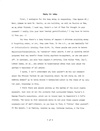
|
2021 jan 28

|
2021 jan 26

|
More... |

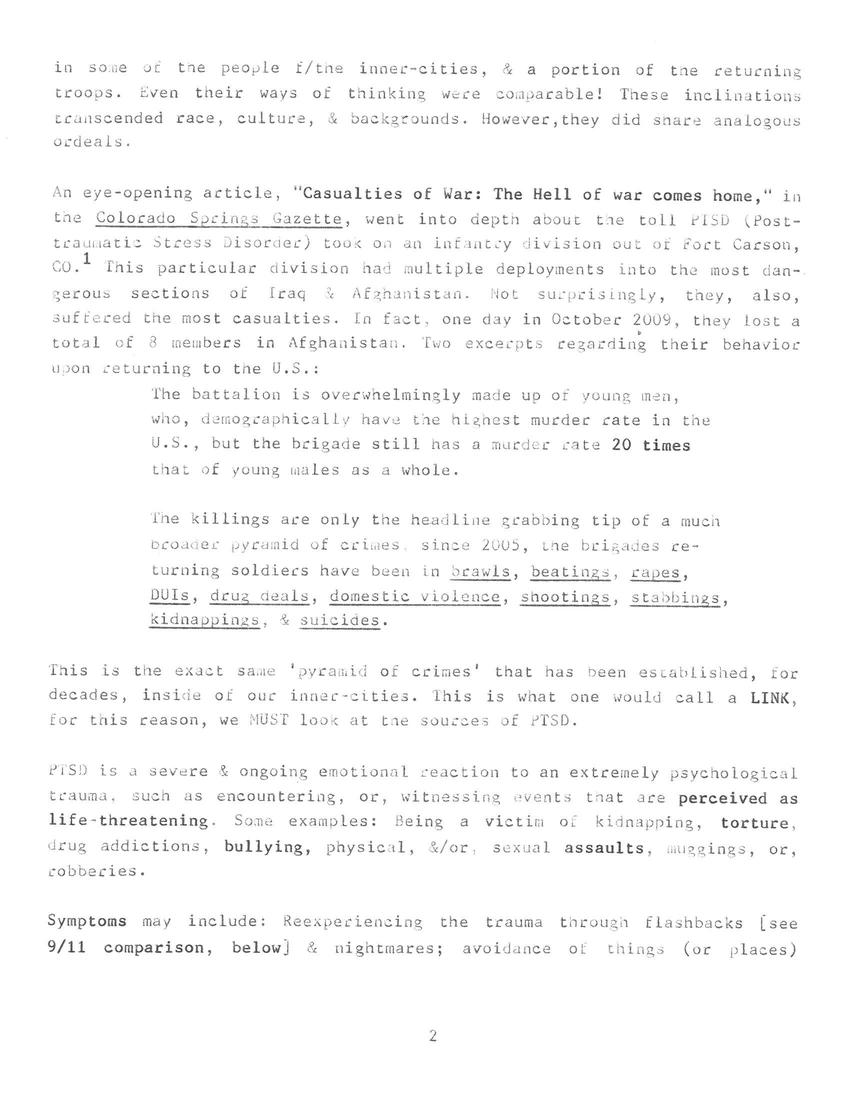
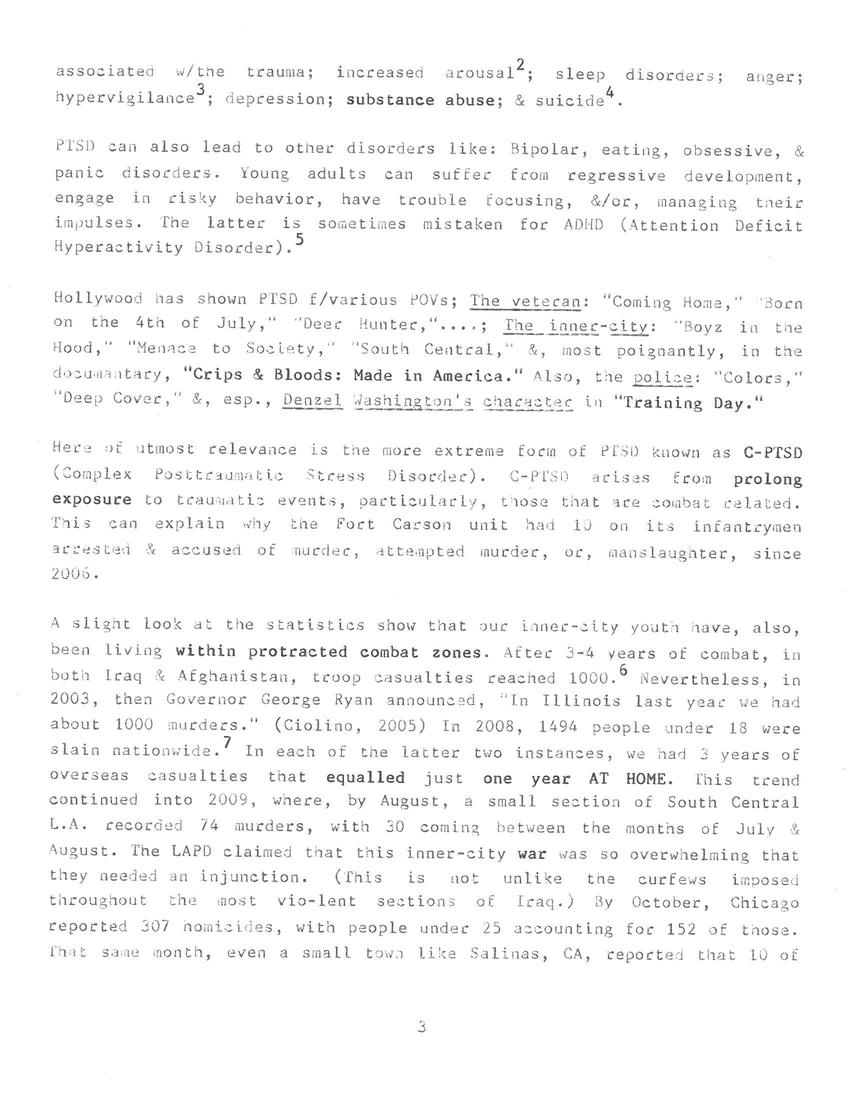
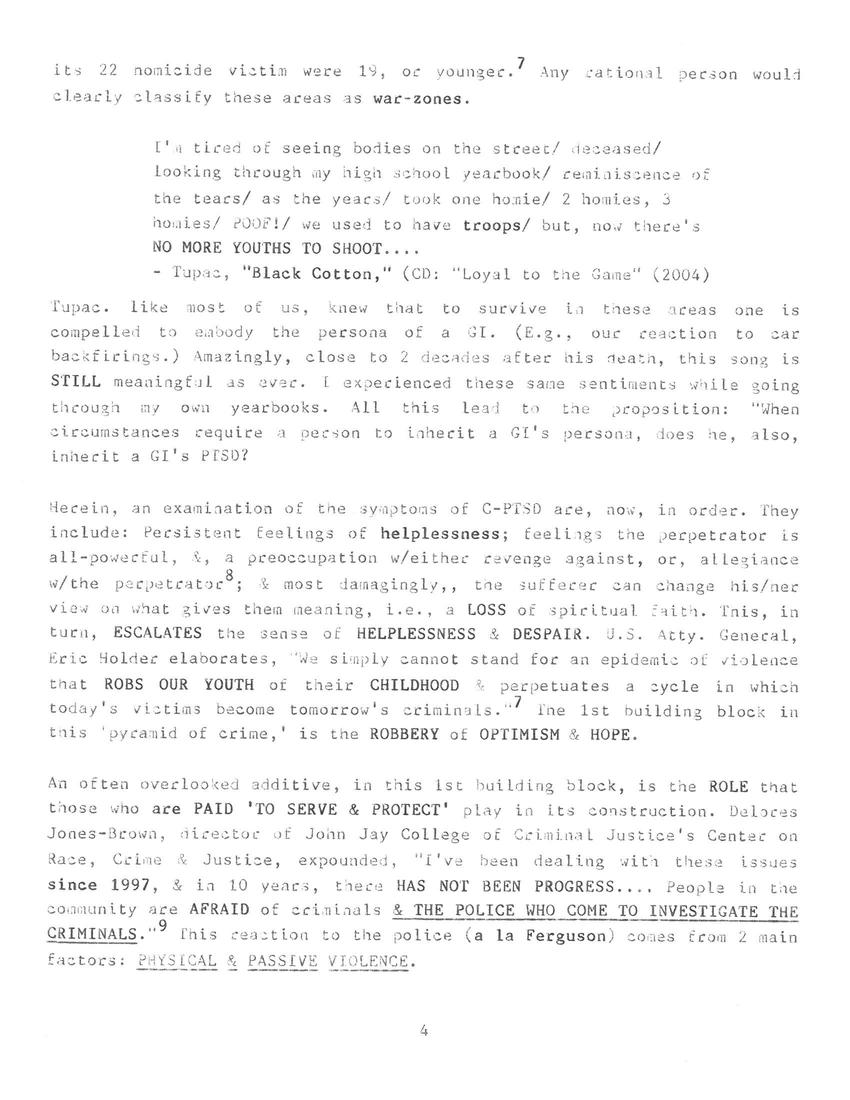
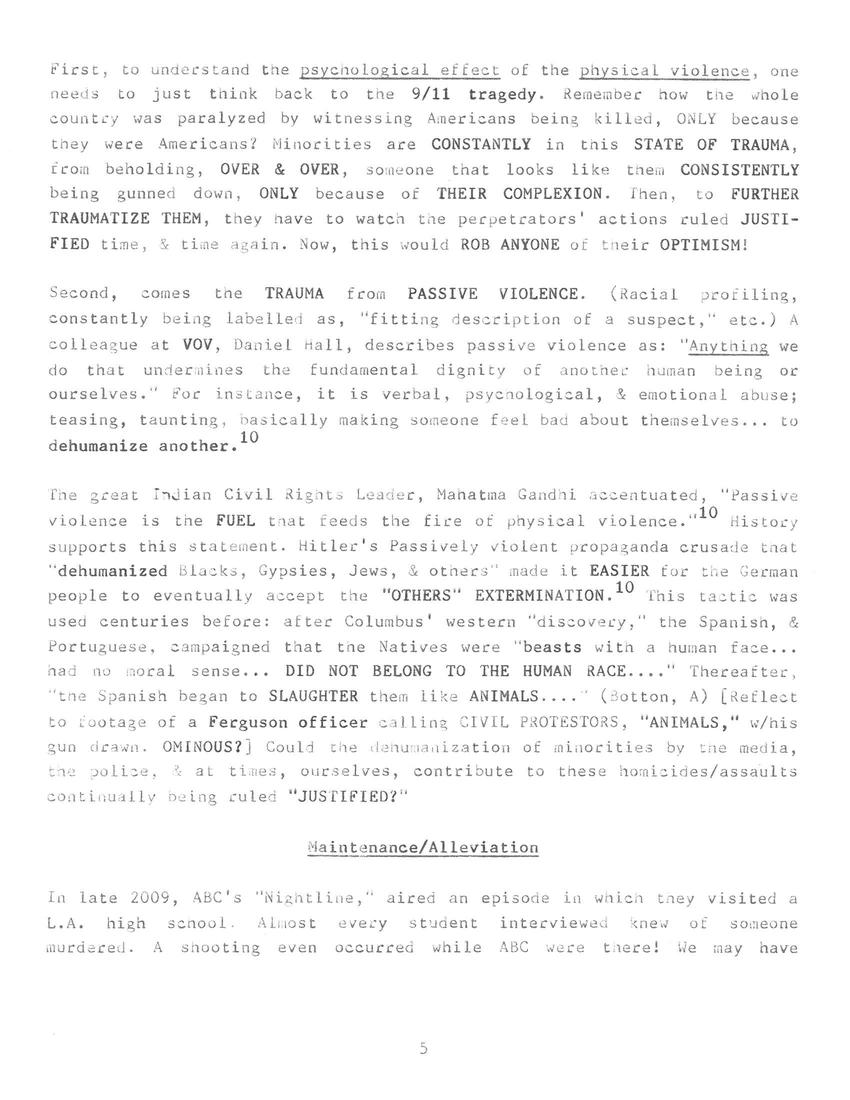
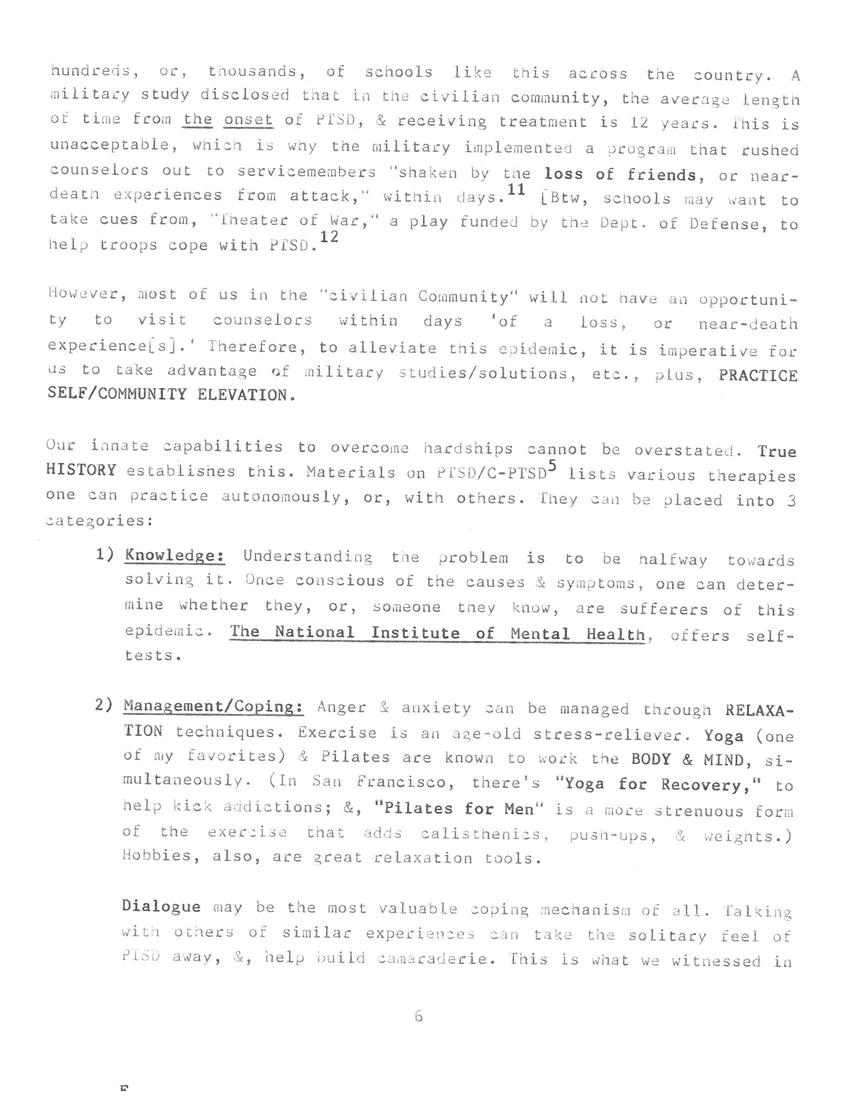

Replies